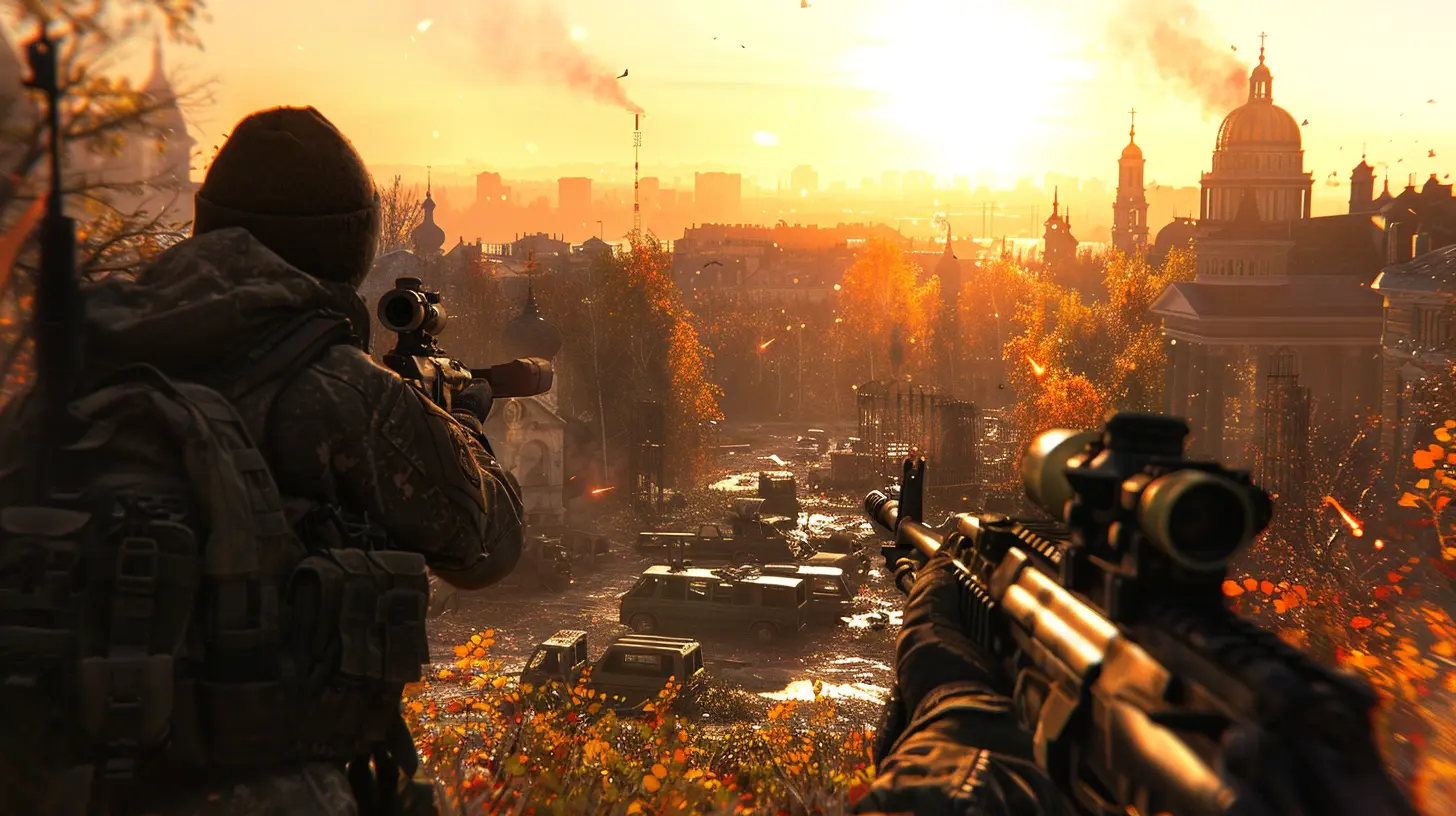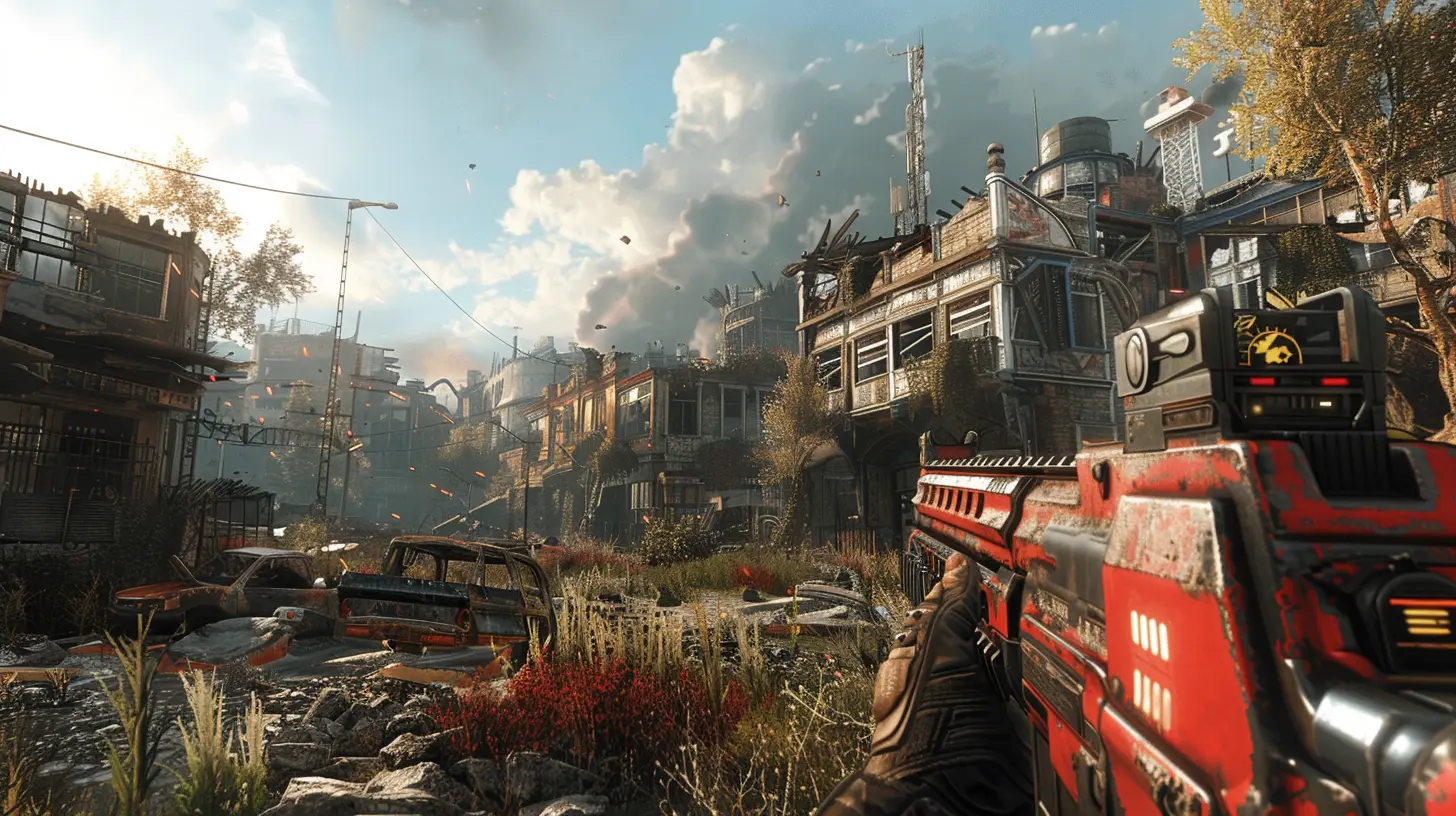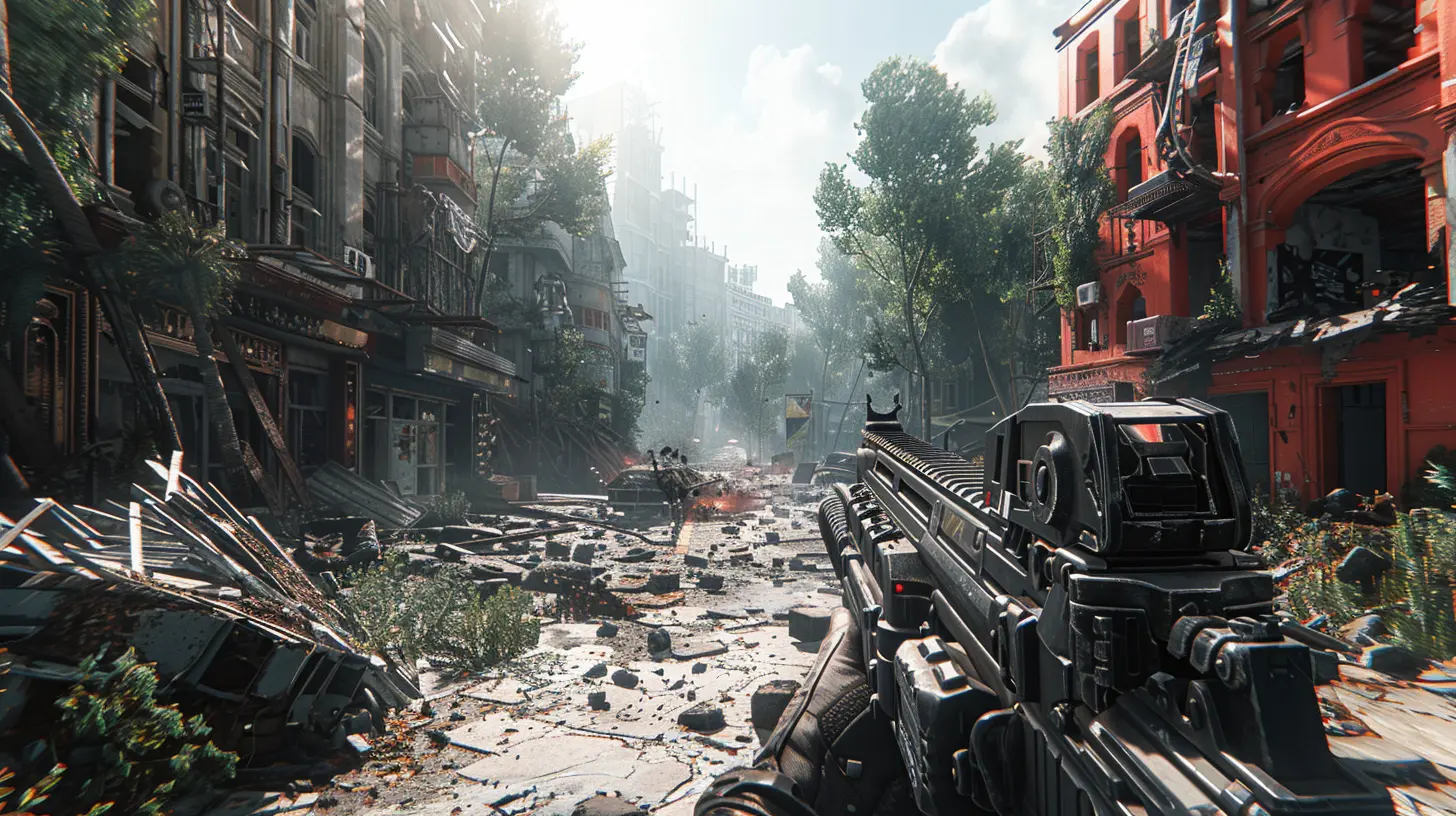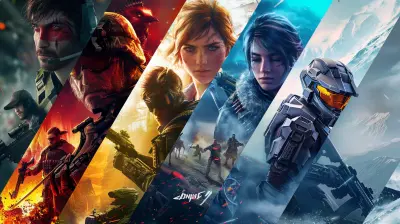How Third-Person Shooters Handle Destruction Physics and Environments
29 June 2025
If there’s something that makes third-person shooters (TPS) stand out, it’s their ability to immerse players in dynamic and ever-changing battlegrounds. One moment, you’re hiding behind cover, and the next, that same cover disintegrates thanks to an enemy’s hail of bullets or an expertly thrown grenade. But have you ever stopped to think about how developers make that level of destruction possible?
Destruction physics and environmental interactivity are some of the most exciting aspects of modern video games. From crumbling buildings to shattered glass and flying debris, they add layers of realism and unpredictability to the gameplay. In this article, we’ll dive deep into how third-person shooters handle destruction physics and environments, the tech behind it, and why it’s such a game-changer for players like us.
What Are Destruction Physics Anyway?
Alright, let’s start with the basics. When we talk about destruction physics in video games, we’re talking about the simulation of things breaking, crumbling, smashing, or exploding in a way that feels “real.” It’s not just about pretty visuals (though they help) — it’s about making the game world feel alive and reactive.Imagine firing a rocket launcher at a wall in a game. In older titles, the wall might stay perfectly intact, almost mocking your efforts. But in modern third-person shooters, that wall can blow apart into chunks, with dust and particles creating a cinematic explosion. It’s that kind of realism that keeps us hooked.
Why Destruction Physics Have Become So Important in Third-Person Shooters
Let’s face it — nobody plays a third-person shooter just to stand around and admire the scenery. We’re in it for the action, the strategy, and, yes, the chaos. Destruction physics aren’t just about eye candy; they serve a real purpose in gameplay.1. Dynamic Gameplay
Destructible environments force players to think on their feet. That concrete barrier you’re hiding behind? It might not be there for long. This creates a sense of urgency and challenges players to adapt their strategies. It’s like a game of chess but with explosions.2. Immersion
When the environment reacts to your actions, it feels like you’re truly affecting the world around you. It’s the difference between watching a movie and starring in it. Whether it’s crumbling debris after a gunfight or the sound of shattering windows, destruction physics pull you deeper into the experience.3. Replayability
Ever notice how games with destructible environments never feel the same twice? That’s because players can alter the battlefield in countless ways. One match, you might blow up a building to flush out enemies. The next, you might leave it intact to try a stealthier approach. The possibilities keep you coming back for more.
How Developers Achieve Realistic Destruction in Third-Person Shooters
Now that we’ve geeked out over why destruction physics are awesome, let’s talk about the tech behind the magic. Spoiler: It’s a combination of clever programming, physics engines, and smart design.1. Physics Engines
At the heart of destruction physics lies the physics engine. Think of it as the brain that calculates how objects move, collide, and break apart. Popular engines like Havok, NVIDIA PhysX, and Unreal Engine’s Chaos system do the heavy lifting here.These engines use complex math to simulate real-world behavior. For instance, when a grenade goes off, the engine calculates how the explosion’s force should affect nearby objects. Should the table flip over? Should the crates splinter into pieces? The engine handles all of that in real time.
2. Pre-Baked Destruction vs. Procedural Destruction
There are two main approaches to destruction in games: pre-baked and procedural.- Pre-Baked Destruction: Think of this as scripted destruction. Developers design specific parts of the environment to break apart in predetermined ways. For example, a wall might always collapse into the same chunks when hit. While it’s less dynamic, it’s easier to control and ensures the game runs smoothly.
- Procedural Destruction: This is the holy grail for destruction physics. Here, objects break apart dynamically based on how and where they’re hit. Fire a rocket at the corner of a building, and only that part collapses. It’s unpredictable, realistic, and insanely satisfying.
Games like Red Faction: Guerrilla are famous for using procedural destruction to great effect. In that game, nearly every structure can be torn down piece by piece. It’s like playing with digital Lego bricks — except you’re demolishing them instead of building.
3. Material Properties
To make destruction feel authentic, developers assign material properties to objects. For example, wood should splinter, glass should shatter, and metal should bend or warp. These properties dictate how objects react under pressure, adding another layer of realism.4. Performance Optimization
Here’s the catch: all this destruction comes at a cost. Simulating physics and rendering debris in real time can be a massive drain on a game’s performance. To keep things running smoothly, developers use tricks like limiting how much debris stays on screen or incorporating “fake” physics for objects that are far away.
Games That Set the Bar for Destruction in Third-Person Shooters
Some games have truly raised the bar when it comes to destruction physics. If you’re a fan of TPS titles, chances are you’ve played at least one of these masterpieces.1. Red Faction: Guerrilla
We’ve already mentioned this gem, but it deserves another shoutout. The GeoMod engine used in Red Faction: Guerrilla allows players to demolish entire buildings in creative ways. Feel like using a sledgehammer to level a building brick by brick? Go for it. Want to drive a truck through a wall? That works too.2. Battlefield Series
Though primarily a first-person shooter, the Battlefield series incorporates third-person gameplay elements in vehicles and some multiplayer modes. Games like Battlefield 4 and Battlefield V feature “Levolution,” where massive destruction events change the map in real time. Dropping a skyscraper on your enemies? Priceless.3. Control
Remedy Entertainment’s Control is a masterclass in environmental interaction. While not a traditional TPS, its third-person perspective and use of destruction make every firefight feel visceral. Walls crumble, furniture flies, and the whole environment feels alive.4. Gears of War Series
The Gears of War franchise is known for its brutal combat and destructible environments. Cover-based shooting takes on a whole new meaning when your cover can be obliterated by enemy fire. It’s a constant game of cat and mouse, with destruction keeping players on edge.The Future of Destruction Physics in Third-Person Shooters
So, where do we go from here? As gaming technology continues to evolve, destruction physics are only going to get better. Here are a few trends to watch:- Improved AI Integration: Enemies in future games might adapt to destruction more intelligently. If you blow up their cover, they’ll scramble to find new hiding spots or use the debris to their advantage.
- More Procedural Environments: Expect more games to embrace procedural destruction, giving players even greater freedom to wreak havoc however they like.
- Enhanced Graphics and Details: As hardware improves, we’ll see more detailed debris, realistic particle effects, and even more immersive sound design. Imagine hearing the crack of wood splintering or the gritty crunch of broken glass underfoot.
Final Thoughts
Destruction physics and dynamic environments are more than just flashy features in third-person shooters. They’re tools that deepen gameplay, heighten immersion, and give players the freedom to unleash their inner chaos. Whether you’re toppling buildings in Red Faction: Guerrilla or watching cover explode in Gears of War, the ability to interact with and alter the game world keeps us coming back for more.The next time you’re in the heat of battle and see a structure crumble before your eyes, take a moment to appreciate the tech and artistry behind it. It’s wild to think about how far games have come — and the best part? The future promises even more destruction-filled adventures.
all images in this post were generated using AI tools
Category:
Third Person ShooterAuthor:

Francesca West
Discussion
rate this article
2 comments
Raegan McCall
Ah, the joy of blowing up a building in a third-person shooter! It's like adult Legos—except instead of building castles, we're just creating chaos. Who knew destruction physics could be so therapeutic? Just remember, my couch won't offer me a respawn if I break it!
October 14, 2025 at 3:02 AM

Francesca West
Absolutely! Destruction in third-person shooters adds a thrilling layer of immersion, turning chaos into a fun, albeit temporary, playground. Just be careful with your couch!
Parker Rogers
Great article! I appreciate the deep dive into how third-person shooters manage destruction physics and environmental interaction. It’s fascinating to see how these mechanics enhance gameplay immersion. Looking forward to more insights on game design in future posts!
July 6, 2025 at 3:44 AM

Francesca West
Thank you for your kind words! I'm glad you found the article insightful. Stay tuned for more on game design!


